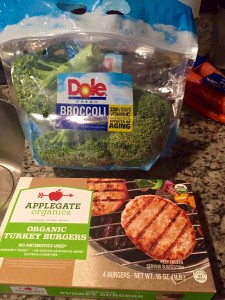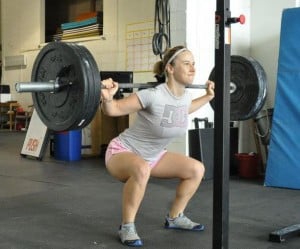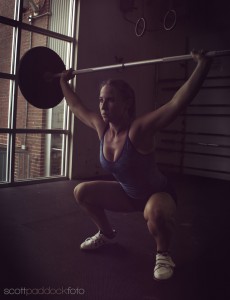Last night was our last free Women & Weights seminar. We ended our six week seminar with a discussion on nutrition. I wanted it to be a positive discussion. So many people, women in particular, struggle with their body image and have negative feelings toward the word diet. Your diet is what you regularly eat, not just something you do to lose a few pounds. Your diet is not temporary. I didn’t want it to be another disheartening talk about all the things we shouldn’t be eating. My take home message was this: Focus on adding a wide variety of nutrient dense foods to your diet, not on everything you should avoid. Here’s why:
In the United States, we universally over-consume sugar and sodium, while simultaneously under consuming Vitamin D, Vitamin E, potassium, Calcium and fiber. It’s the obese and malnourished paradox. When focusing on all the things we’re supposed to avoid (cholesterol, saturated fat, etc.), we forget about a lot of things we should be eating - like adequate protein, vitamins and minerals. We eat far too many processed foods stripped of nutrients and far too few whole foods and home-made meals. The average American woman is protein, iron and calcium deficient. This has serious impacts on strength training and was the focus of my seminar.
Protein supports training and recovery. Without sufficient protein we cannot build the body sculpting muscle that we so desire. Muscle gives us shape. When you say you want to tone up, it means you want to build muscle and likely lose some fat. Women who strength train should be consuming the same relative amount of protein as men for optimal results: 0.75 to 1 gram of protein per pound of bodyweight each day. Yep, that means over 100 grams of protein each day for most women.
Low iron affects metabolism and oxygen transport, as well as causes chronic fatigue. All of which, negatively impact strength training. By including red meat, seafood, lots of leafy greens and veggies in your diet you can increase your iron levels. Simultaneously, avoid pairing foods with high amounts of tannins, like coffee or tea, with your meals. They can block absorption of iron. Instead, pair foods rich in iron with other foods high in Vitamin C which helps with absorption of iron. For example, a spinach salad topped with mandarin oranges or red bell peppers. Cooking with cast iron cookware can increase the iron content of your meals, and taking iron supplements can also help. In general, the only supplements I recommend are fish oil, quality multivitamins and Vitamin D or Iron, as needed.
Adequate calcium is imperative for bone health. Strength training improves bone density at any age, however if you do not consume enough calcium in your diet, you will miss out on this major benefit of strength training. Dairy isn’t the only, or even the best source of calcium either. Fish, tofu and veggies in the cabbage family (broccoli, kale, bok choy, mustard and turnip greens, etc.) have very large amounts of bioavailable calcium. Also, bone broth is a great way to get more essential vitamins and minerals in your diet. Save your chicken carcasses, and your pork or beef bones in the freezer until you have enough to make a stock (about 2 pounds). Drinking a warm mug of bone broth in the morning during the winter months could improve your health and take off the chill.
Lastly, a note about treats. Treats, in small amounts, have a place in a healthy diet. Beyond our health, there are many reasons we eat food; pleasure, social community, identity, and tradition are all reasons why we might eat certain foods. We need to have a healthy relationship with the food we eat. The problem isn’t indulging occasionally; it’s when we treat ourselves daily, or most days of the week. Then it’s no longer a “treat”, but a part of our diet: what we habitually eat. Stay mindful of the undeniable emotional aspect of eating. There is no need to berate yourself for an occasional indulgence. Don't turn these indulgences into negative self talk that fuels an underlying self loathing. That’s not healthy either. If you are not in maintenance or strength building state, you should limit yourself to 1-2 small treats each week. Once you’ve reached your goal, you should allow no more than 2-3 small treats each week. Notice I didn’t say cheat meals, or cheat days. You can still stay on track when you indulge by balancing the rest of your macronutrients and daily calorie allotment around your treat.
The rest of our talk concentrated on calculating a daily caloric and macronutrient intake to support a strength training program. I had a great time chatting with a spectacular group of women and I’m looking forward to making Women and Weights a regular occurrence. Attending a women’s college, I learned the vital importance of relationships among women. I plan to offer a 12 week women only strength training program starting in March. The goal would be to introduce women to strength training, as well as to other like-minded women. I’ve experienced first hand the transformative power and inspiration that accompanies women working together, not against each other, as well as that of strength training. Combining the two can only spell success! Stay tuned for more information.
Joanna Meade (view bio) is an NSCA Certified Personal Trainer and CrossFit Level 1 Trainer at the Downtown Athletic Club. She is also a proud graduate of Sweet Briar College, a women's college in Virginia, as well as Johns Hopkins University. She can be reached at Merritt Athletic Clubs Downtown Club at 410-332-0906.
















